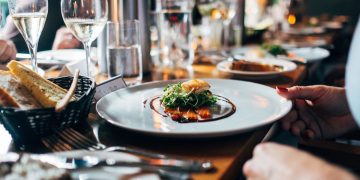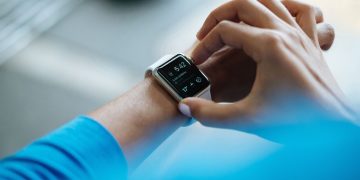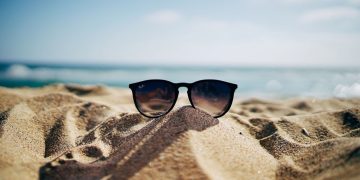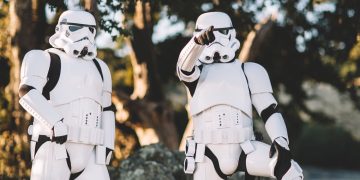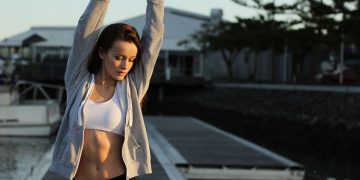Talk about an unusual sight: A bright yellow rubber ducky stuck to a wet seaside rock. Waves pummel it for days, but it doesn’t move an inch—thanks to an ultra-sticky glue designed by AI.
If you’ve ever tried patching a leaky pipe or roof, you’ll know that chemical glues don’t work well. Super glues rapidly harden with moisture, and there’s very little time to apply them. They also tend to crack on uneven surfaces, like rocks or tubing, and in salty and wet conditions.
Soft hydrogels are a more pliable alternative, but their stretchy properties often directly cancel those that would make them sticky. Still, scientists have long wanted to use hydrogels as glues in medical applications. A super-sticky hydrogel could seal deep wounds, act as a Band-Aid during surgery, and help tissues heal faster. They could also coat prosthetics or wearable biosensors.
The problem? The body tends to be wet, uneven, and salty. Nature has a solution. From bacteria to barnacles, mussels, and snails, a range of creatures squish out tacky protein glues that let them glide, crawl, or grab wet surfaces. These are sometimes so strong you need tools to pry the animals off.
Now, a team from Japan and China has transformed these natural proteins into sticky hydrogels and used AI to dream up even stickier versions. One of the AI’s creations clung to ceramic, glass, and metal surfaces in salt water for over a year—with a kilogram (roughly 2.2 pounds) of weight hanging from it. And yes, it also stuck a rubber ducky to an inhospitable seaside rock. Another sealed off a burst water pipe for five months. Both versions were also biocompatible with mice, suggesting the AI-generated super glues have a future in medicine.
“Super-adhesive hydrogels such as these that stick strongly to irregular and wet surfaces could be transformational for many biomedical applications,” wrote Laura Rosso at University of Milano-Bicocca, who was not involved in the study.
Hydrogel Bloat
Using AI to discover and design materials isn’t new. But studies have mostly focused on hard materials or small chemicals. One of these found millions of previously unknown crystals that could be useful in microchip and battery designs. Another, combined with a robotic system, automatically synthesized a multitude of new materials.
But ironically, squishy hydrogels have always been a hard nut to crack.
Hard, inorganic materials have well-defined structures and properties, making it easier to train AI to model them. In contrast, hydrogels are made of squishy molecules that swell in water. The gels contain networks of molecules that extend “branches” like tiny trees. The 3D structure of a gel depends on how each molecular branch interacts with the others.
The materials also deform under pressure and swell in wet environments. These properties are the antithesis of what you’d want in a super-sticky glue.
Using AI to find “hydrogels suitable for a specific function is a much more complex task” than discovering hard materials, wrote Russo. AI has only been used to predict how hydrogels behave, such as how they swell and if they’re useful for 3D printing projects. You would need a large database of sticky proteins for AI to learn how to design them—but there isn’t one.
A Tacky Thought
The new study took inspiration from roughly 200 species that pump out sticky proteins, including bacteria and barnacles. Many of these proteins have been sequenced.
Scanning existing protein databases, the team noted which amino acid sequences could lead to proteins that stay sticky under water. They then painstakingly designed and made 180 hydrogels, each built from molecules with the highest chances of acting like natural adhesives. In lab tests, they documented their stickiness, swelling, and how they behaved in running water.
Using this data, the team trained an AI to design more powerful underwater hydrogel glues. They fed the AI’s best results back into the algorithm to improve them further. Three cycles later, the adhesive strength of the top three hydrogels far outperformed the training dataset.
These included R1-Max, the gel that stuck the duck to a rock. A wet, slippery seaside rock is one of the worst scenarios for a glue. Waves can easily peel off a lightweight toy, and tides change the moisture level, which most glues can’t tolerate.
“We want to show our adhesive hydrogel…can glue to the duck on the wet rock…and the duck is cute,” study author Hailong Fan told Nature. Battered by incoming waves, the duck proved stubborn as a barnacle on its rocky perch.
In another test, the hydrogel, shaped like a large Band-Aid, instantly patched a pipe blasting water. The gel sealed the hole for more than five months, suggesting it could be used to fix emergency underwater leaks.
The material is also biocompatible. When inserted under the skin of mice, the critters went on their merry way without notable immune reactions or other side effects. “Super-adhesive hydrogels such as these that stick strongly to irregular and wet surfaces could be transformational for many biomedical applications,” wrote Russo.
The AI could design other soft materials too, especially ones with medical uses. But it will have to navigate the complexities of tissues and organs—a hydrogel designed for the skin may not work on the heart or arteries. Different molecules in each organ could also alter how the gel works.
The team is now trying to pick their AI’s “brain” to find out why R1-Max is so sticky. Knowing the exact reason could lead to even better protein glues.
More broadly, the work “demonstrates that AI is no longer just being tentatively scoped out as a tool for materials science,” wrote Russo. “It has already been adopted to improve and support the design and generation of materials.”
Source link
#Designs #Underwater #Super #Glue #Grips #Barnacle







